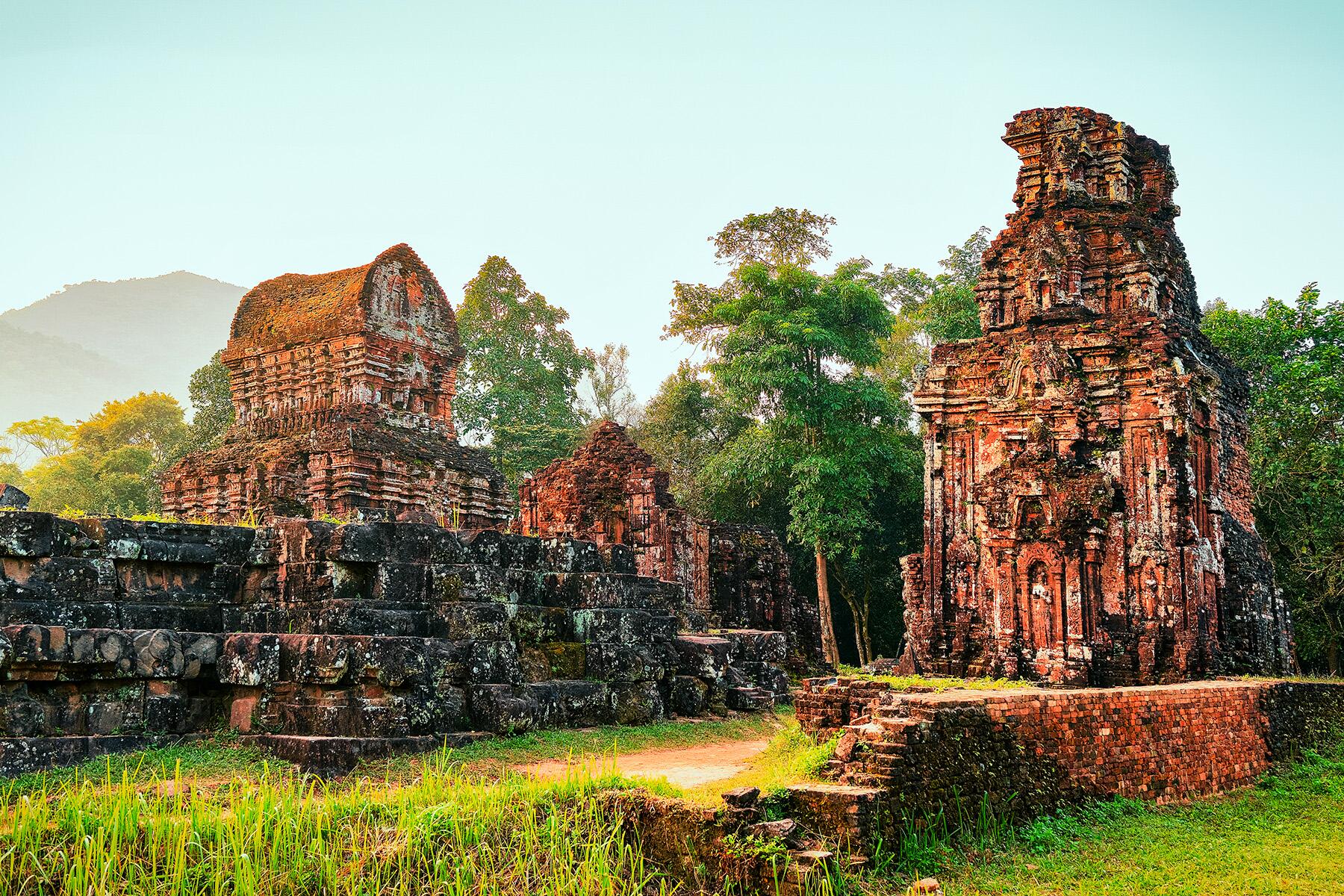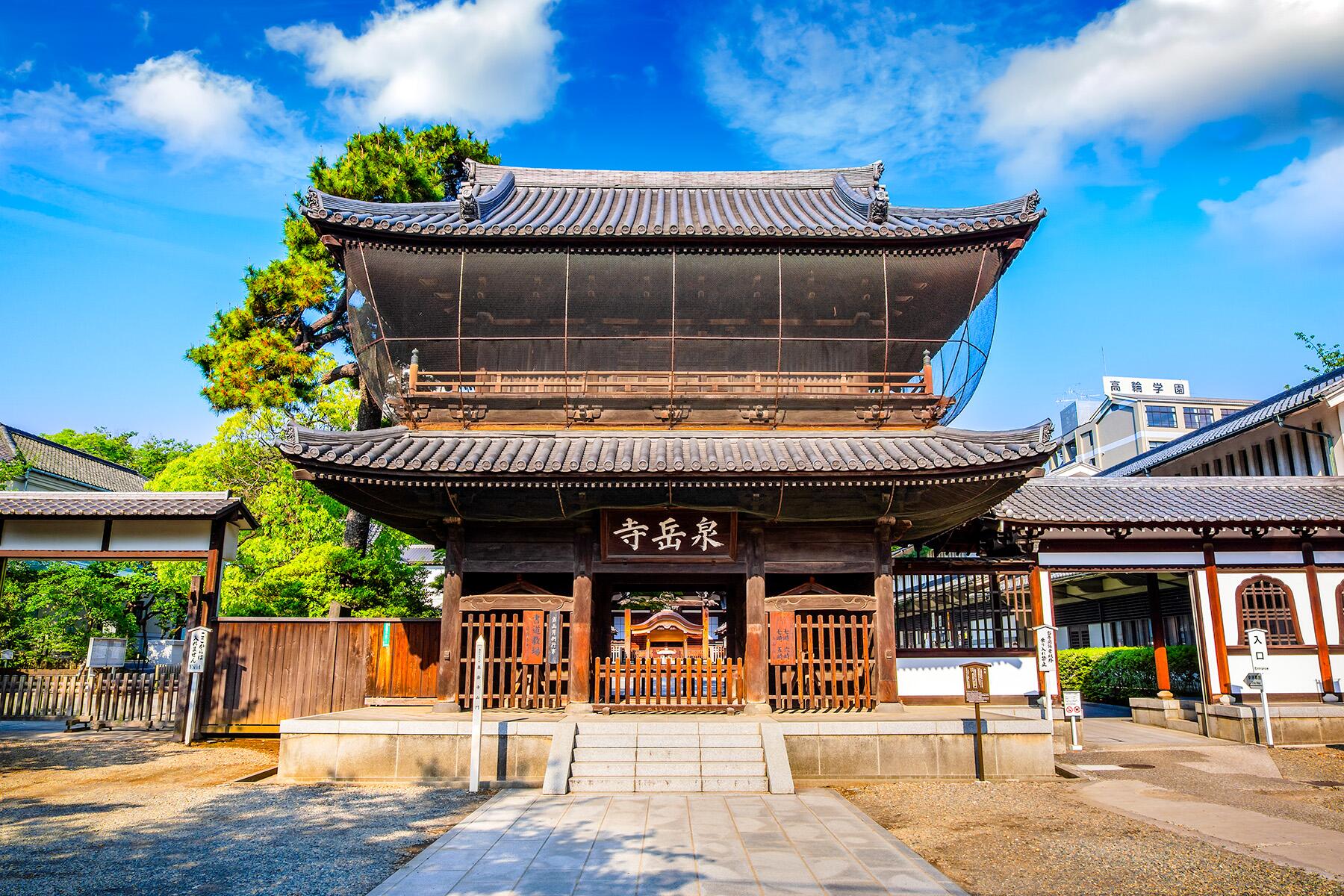In the subcontinent-sized India, traveling “back in time” is practically a given.
India is renowned for its rich history, but popular ancient cities like Varanasi, Madurai, and Pushkar often receive the most attention. However, a wealth of lesser-known ancient towns across India offer a glimpse into the country’s fascinating past, spanning thousands of years of human civilization. Many of these settlements have preserved their architectural, cultural, and historical heritage despite the passage of time. From the bustling port towns of the western coast to the sacred sites of the north, these ancient Indian towns promise to captivate visitors of all ages.
Top Picks for You
Rajgir
WHERE: Nalanda District, Bihar
A former capital of the Magadha Kingdom that existed in ancient India from the 6th to 4th centuries BCE, Rajgir— flanked by 40 km of Cyclopean Wall—is one of the unexplored places in India. It is an ancient land of great spirituality, which finds mention in the Hindu epic Mahabharata and where Gautam Buddha and Lord Mahavira (the last spiritual teacher of Jainism) are believed to have spent time. The devout can visit Son Bhandar Jain cave temples, featuring intricately detailed and elaborate carvings, while the adventurous can trek up to the Gridhakuta Hill or Vulture Peak, where Buddha delivered some of his famous sutras or Vishwa Shanti Stupa atop the Rajgir Hills. After a long day, dip in the Brahmakund hot spring for a relaxing experience. While you can see many of these sights in one long day from the capital city Patna, just three hours away by car, we’d recommend staying one or two nights for a full experience. Rajgir Residency Hotel is a solid mid-range hotel, otherwise, pick Indo Hokke Hotel for a splurge.
Thanjavur
WHERE: Thanjavur District, Tamil Nadu
Formerly known as Tanjore, Thanjavur has a history dating back nearly two millennia. From its roots in the ancient Tamil civilization during the Sangam era (3rd century CE) to its thriving under the reign of the Chola kings, known for their patronage of various forms of art, Thanjavur is one of the most important cultural hubs in South India. The town’s cultural and historical heritage is reflected in its impressive architectural masterpieces, such as the 11th-century Brihadisvara Temple (considered one of the greatest engineering feats of its time, and its rich musical and literary traditions, which continue to this day. To make the most of your trip, stay in the heritage wing of the eco-friendly Svatma Hotel.
INSIDER TIPWhile here, shop for the distinctive Tanjore paintings and dancing dolls at the government-owned Poompuhar Handicrafts.
Recommended Fodor’s Video
Osian
WHERE: Jodhpur District, Rajasthan
Once an important stop on the ancient Silk Route during the Gupta era (4th to 6th centuries AD), the Osian of today is more of a religious town. Dozens of Hindu and Jain stone temples dating from the 8th to 12th centuries dot the interesting backstreets of this ancient town in India, about an hour and a half north of Jodhpur, Rajasthan. Its showstopper is the enormous Sachiya Mata Temple with intricate carvings on ceilings. Also worth a visit is Mahavira Jain Temple featuring carved pillars and an image of Lord Mahavira made of sand and milk and coated in Gold. Stay at Osian Sand Dunes Resort and Camp, offering tent accommodations on the virgin sand dunes of the Thar desert and jeep and camel safaris.
Pattadakal
WHERE: Bagalkot District, Karnataka
Only those in the know travel to the northern Karnataka town of Pattadakal, where some of the country’s best-preserved Chalukya (a medieval dynasty of Peninsular India) architecture can be found. Around ten temples (nine Hindu and one Jain) fill a plain along the Malaprabha River, creating an ethereal landscape. Many of these religious structures were commissioned in the 7th and 8th centuries by Chalukya queens in gratitude for their husbands’ triumphant return from battle. The most noteworthy include the Virupaksha Temple, with its Dravidian-style tiered pyramidal roof. The Papanatha Temple is studded with intricate carvings displaying Vedic and Puranic concepts, and the Galaganath Temple houses a sculpture of Lord Shiva slaying the demon, Andhaka. With your own transport, you can visit this ancient town— inscribed by UNESCO as a World Heritage Site in 1987— as a day excursion from Hampi, about 95 miles. For a less rushed experience, stay in the nearby modest town of Badami—about 14 miles from Pattadakal- and explore its cave temples built by early Chalukya kings in the 6th century. The best accommodations options are authentic Heritage Resort and reasonably priced Hotel Badami Court.
Lothal
WHERE: Saragwala, Gujarat
Lothal is one of the world’s earliest port towns, established more than 4,000 years ago as part of the Indus Valley Civilization in present-day India. A massive flood destroyed the town, and its remains were lost, hidden beneath the sands of time. However, it was rediscovered in the 20th century through the efforts of archaeological excavations carried out by the Archaeological Survey of India (ASI). These excavations revealed a treasure trove of artifacts that shed light on the civilization that once thrived there. These include a dockyard, metal tools, seals, public buildings, and houses. The town can be explored as a day trip from Ahmedabad, less than two hours by car.
INSIDER TIPA National Maritime Heritage Complex will soon be set up in this town to preserve and promote its rich maritime heritage. It will include a lighthouse museum, several galleries, theme parks, and other innovative facilities.
Orchha
WHERE: Niwari District, Madhya Pradesh
In a country brimming with historic places, it’s easy for Orchha, a small town in the central-India state of Madhya Pradesh, to languish in obscurity. Nestled along the banks of river Betwa, the town was founded in the 1530s by Raja Rudra Pratap Singh as a capital of the powerful Bundela dynasty and grew in grandeur under his reign. Today, it is home to many architectural head-turners that demonstrate how it must have looked during its peak. Pay special attention to the palaces such as the 16th-century Raja Mahal and the early-17th-century Jahangir Mahal located within the premises of Orchha Fort complex. The former has colorful murals adorning its interior, while the latter reflects Rajput and Mughal architectural styles. Evening visits will get access to a sound and light show. Outside the complex lies the sky-piercing Chaturbhuj temple that stands out with its pointed spires; and the one-of-a-kind Ram Raja Temple, where the Hindu deity Rama is revered as a king.
The town can be visited as a day trip from Khajuraho (known for its temples with erotic sculptures), but you’ll enjoy it more if you spend a night or two, giving you time not only to explore the historic ruins, but also to witness the memorable sunrises or sunsets over the Betwa River. There are royal chattris (cenotaphs) of the medieval rulers, erected upstream along the riverbank, that are worth checking out, too.
Mandu
WHERE: Dhar District, Madhya Pradesh
Set atop the rugged Vindhya Range, Mandu has pretty much everything you’d expect from a lost city. It has a timeline that spans the Rajput, Afghan, Mughal, and Maratha eras, a beautiful natural setting with baobab trees all around, and the aura of being off the radar because it’s in the less-traveled southwestern Madhya Pradesh.
A roundup of the major landmarks includes the 15th-century Afghan-style Hoshang Shah’s tomb that served as a model for the majestic Taj Mahal, the 16th-century Roopmati’s Pavilion and Palace of Baz Bahadur (the last independent ruler of Mandu) that combines architectural elements from both Mughal and Rajput traditions; the Jahaz Mahal (Ship Palace) that contains beautifully-designed step pools; and the Hindola Mahal, which features ogee arches.
Hampi
WHERE: Vijaynagara District, Karnataka
About seven hours drive from Bangalore, the medieval town of Hampi is one of the most atmospheric destinations in India. The town lived out its golden age from the 14th until the early 16th centuries, when it served as the capital of Vijayanagara, one of India’s most formidable Hindu kingdoms. Its peak stretched from coast to coast, but this prosperity proved to be its undoing, attracting successive raids from the Deccan Sultanates in the second half of the 16th century, after which it was reduced to rubble and eventually abandoned. What remains of Hampi is now a UNESCO World Heritage Site.
Several dilapidated palaces, Dravidian temples, monolithic deities, water tanks, and fortification ramparts fill the boulder-covered terrain along the Tungabhadra River, creating an ethereal landscape. One of the intriguing structures is the Vittala Temple that features a giant stone chariot and musical stone pillars. Other highlights include Virupaksha Temple dedicated to Lord Shiva (still in active worship) and the Royal Enclosure that contains ruined palaces of the royal families.
INSIDER TIPFor the best view of the town and the surrounding countryside, climb up the Matanga Hill during the sunrise.
Siddhpur
WHERE: Patan District, Gujarat
About two-and-a-half hours north of the Ahmedabad, Siddhpur’s location along the holy Saraswati River and European-styled architecture make it one of India’s most visually arresting ancient towns. It rose to prominence in the 10th century under the reign of Solanki rulers, who built several Hindu temples. The ruins of the 12th-century Rudra Mahalaya Temple are a must-visit. Fast-forward to the 19th century, the town saw a construction boom of sorts thanks to the Dawoodi Bohras, an affluent Muslim mercantile community. Today, walking around the town will make you feel like you’re in Karlovy Vary, Czech Republic. The streets are lined with pastel-painted mansions, complete with gabled roofs, stuccoed facades, elaborate pilasters, decorated doors, bay windows, Victorian-inspired fenestrations, and trellised balconies. Of particular note is the 365-windowed Jhaveri Mansion in the Muslim neighborhood of Najampura. Bed down at any of the no-frills hotels like Hotel Milestone and Hotel Anand.
INSIDER TIPIt’s worth taking a side trip to the ancient fortified town of Patan, about 40 minutes from Siddhpur. An unmissable sight here is the 11th-century Rani Ki Vav stepwell.
Kannauj
WHERE: Kannauj District, Uttar Pradesh
About a four-hour drive from the world-famous Agra, Kannauj traces its antiquity to the days of Hindu epics, Ramayana, and Mahabharata. The town reached its apex in the seventh century when it became the capital of Harshavardhana’s empire. When Chinese Buddhist traveler, Xuanzang visited India, he described it as “a large, prosperous city with many Buddhist monasteries.” Today, little remains of this great capital are located in northern India’s Ganges belt. If you want to plunge into the ancient world of Kannauj, visit the Archaeological Museum and admire priceless artifacts dating back to the Bronze age. The town is also home to hundreds of perfume distilleries, concocting ittar (oil-based natural perfumes) from age-old traditions. You can take a guided tour of the factories and hone your olfactory skills; don’t forget to buy one for yourself. Rest up at the luxurious MY Heritage Hotel & Banquet or the basic Hotel Rajdhani.




